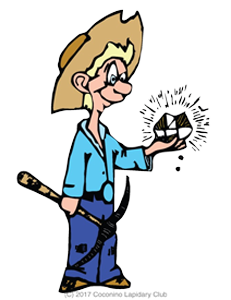In this blog I’m displaying examples of jewelry and art objects from ancient Asia and the Mughal Empire. I also include examples of jewelry from the Roman Empire and the Medieval Victorian Eras in Europe. ANCIENT ASIAN ANCIENT ROMAN EMPIRE MEDIEVAL EUROPEAN RENAISSANCE EUROPE VICTORIAN ENGLAND (EUROPE) REFERENCES Ref 1. https://onlineonly.christies.com/s/ancient-jewelry-wearable-art/central-asian-gold-sapphire-finger-ring-30/63724 Ref 2. https://www.internetstones.com/ancient-technology-sri-lankan-gemstone-beads-carvings-cameos-intaglios-carnelian-rock-crystal.html Ref. . . Read More
Minerals
Ancient Sapphires
Largest Star Sapphire/Ruby
We usually think of star sapphires and rubies as stones in the few carat range, not in hundreds and thousands of carats. But some are an amazing size. At the top, are the World’s Largest which are truly awesome. In this blog I’ll describe the worlds largest blue star sapphire, star ruby, and black star. . . Read More
Corundum – From Sapphires to Rubies
Gemstones of the mineral corundum [Ref 1] offer a rainbow of colors for the lapidarist and jewelry maker as displayed in Figure 1. Traditionally, of these, the ruby and blue sapphire, along with diamond and emerald, are considered to be the four-membered family of precious gems. Corundum gemstones, other than the ruby and blue sapphire,. . . Read More
Beryl Art Objects
In this blog beautiful art objects, carved and sculpted in crystals of the beryl gemstones, are presented. In some, the shape of the gemstone inspired the shape of the object. In others, the color of the object is enhanced by decorating with differently-colored gems. Ancient to modern art objects are presented. REFERENCES Ref 1. https://www.metmuseum.org/toah/works-of-art/25.78.90/ Ref. . . Read More
Diamonds IV
Lattice Defects, Impurities and Color As stated in references 17, 18 of my DIAMONDS II blog, impurity atoms and lattice vacancy defects are responsible for the coloration of diamonds [Ref 1]. A lattice vacancy (V) without a carbon atom in the diamond lattice which partners with one to four neighboring nitrogen atoms (N), in colored diamonds,. . . Read More
Diamonds III
A Gallery of Natural Diamond Crystals The gallery includes clear crystals and those exhibiting a range of colors (Figures 2-13), a range of shapes (Figures 2-15), examples of inclusions found in Diamonds (Figures 1-3), examples of shaping and etching by resorption (Figures 3-15), and examples of twinned diamonds (Figures-14,15). Well-developed crystal forms, typical of diamonds, are. . . Read More
Diamonds II
In this blog, my second on diamonds, I’ll discuss the physical and chemical properties of a diamond, then its optical properties in relation to its crystal structure and chemistry, and then their formation and associated geology. CRYSTAL STRUCTURE AND PROPERTIES OF DIAMOND To understand the physical properties of the diamond it’s important to understand its. . . Read More
Fluorite Art Works & Jewelry
Artworks and jewelry have been created from fluorite since ancient times, such as the carved fluorite statues discovered in Crittenden County, Kentucky and shown in Figure 1 [Ref 1]. The statues reflect the Middle Mississippian Culture extending approximately 800 Ad to 1600 AD. The second statue from the left, known as the Tolu Statue is. . . Read More
Fluorite, A Collectors Favorite
The rich, often “electric” rainbow colors of fluorite specimens from world-wide locations, the frequent appearance of different colors within regions, bound with the lattice planes within a crystal, and the sculptural appearances of stepped cubic and octahedral crystals, as shown in Figures 1-5, make fluorite a favorite among collectors. In this blog I’ll describe those. . . Read More
Fluorite, A Gallery of Specimens
I’ve assembled a gallery of 15 fluorite specimens from some of the locations around the world which are favored by collectors.
